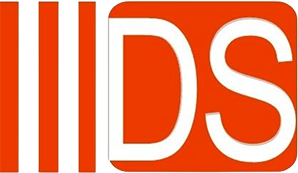Summary
DINSEN® has the right socketless cast iron waste water system available whatever the application: waste water drainage from buildings (SML) or laboratories or large-scale kitchens (KML), civil engineering applications such as underground sewer connections (TML), and even drainage systems for bridges (BML).
In each of these abbreviations, ML stands for “muffenlos”, which means “socketless” or “jointless” in English, indicating that the pipes do not require conventional socket and spigot joints for assembly. Instead, they utilize alternative joining methods such as push-fit or mechanical couplings, offering advantages in terms of installation speed and flexibility.
SML
What does “SML” stand for?
Super Metallit muffenlos (German for “sleeveless”) – market launch at the end of the 1970s as a black “ML pipe”; also referred to as Sanitary sleeveless.
Coating
Inner coating
- SML pipe: Epoxy resin ochre yellow approx. 100-150 µm
- SML fitting: Epoxy resin powder coating outside and inside from 100 to 200 µm
Outer coating
- SML pipe: Top coat red-brown approx. 80-100 µm epoxy
- SML fitting: Epoxy resin powder coating approx. 100-200 µm red-brown. The coatings can be painted over at any time with commercially available paints
Where to apply SML pipe systems?
For building drainage. Whether in airport buildings, exhibition halls, office/hotel complexes or residential buildings, the SML system with its outstanding properties reliably performs its services everywhere. They are non-flammable and soundproof, making them ideal for application for buildings.
KML
What does “KML” mean?
Küchenentwässerung muffenlos (German for “kitchen sewage socketless”) or Korrosionsbeständig muffenlos (“corrosion-resistant socketless”)
Coating
Inner coating
- KML pipes: Epoxy resin ochre yellow 220-300 µm
- KML fittings: Epoxy powder, grey, approx. 250 µm
Outer coating
- KML pipes: 130g/m2 (zinc) and approx. 60 µm (grey epoxy top coat)
- KML fittings: Epoxy powder, grey, approx. 250 µm
Where to apply KML pipe systems?
For drainage of aggressive waste water, typically in laboratories, large-scale kitchens or hospitals. Hot, greasy and aggressive wastewater in these areas requires the inner coating to offer increased resistance.
TML
Coating
Inner coating
- TML pipes: Epoxy resin ochre yellow, approx. 100-130 µm
- TML fittings: Epoxy resin brown, approx. 200 µm
Outer coating
- TML pipes: approx. 130 g/m² (zinc) and 60-100 µm (epoxy top coat)
- TML fittings: approx. 100 µm (zinc) and approx. 200 µm epoxy powder brown
Where to apply TML pipe systems?
TML – Collarless sewage system specifically for laying directly in the ground, mostly civil engineering applications such as underground sewer connections. The high-quality coatings of the TML range provide maximum protection against corrosion, even in aggressive soils. This makes the parts suitable even if the pH value of the soil is high. Due to the high compressive strength of the pipes, installation is also possible for heavy-duty loads in roads under certain circumstances.
BML
What does “BML” stand for?
Brückenentwässerung muffenlos – German for “Bridge drainage socketless”.
Coating
Inner coating
- BML pipes: Epoxy resin approx. 100-130 µm ochre yellow
- BML fittings: Base coat (70 µm) + top coat (80 µm) according to ZTV-ING Sheet 87
Outer coating
- BML pipes: approx. 40 µm (epoxy resin) + approx. 80 µm (epoxy resin) in accordance with DB 702
- BML fittings: Base coat (70 µm) + top coat (80 µm) according to ZTV-ING Sheet 87
Where to apply BML pipe systems?
The BML system is perfectly tailored for outdoor settings, including bridges, overpasses, underpasses, car parks, tunnels, and property drainage (suitable for underground installation). Given the unique demands of drainage pipes in traffic-related structures like bridges, tunnels, and multi-storey car parks, a highly corrosion-resistant external coating is essential.
Post time: Apr-15-2024









